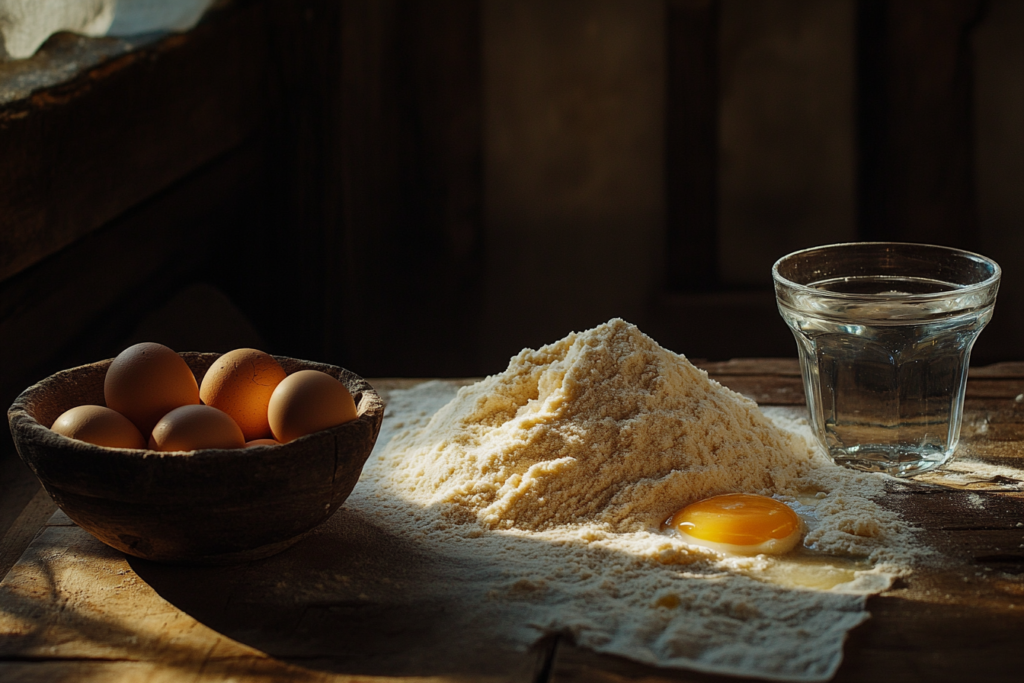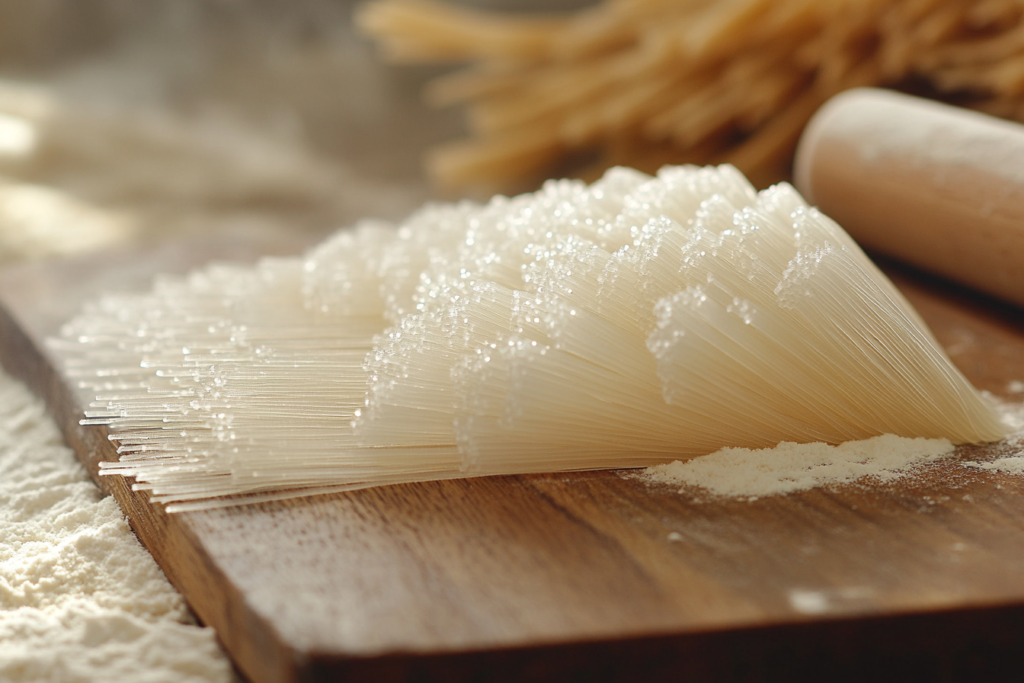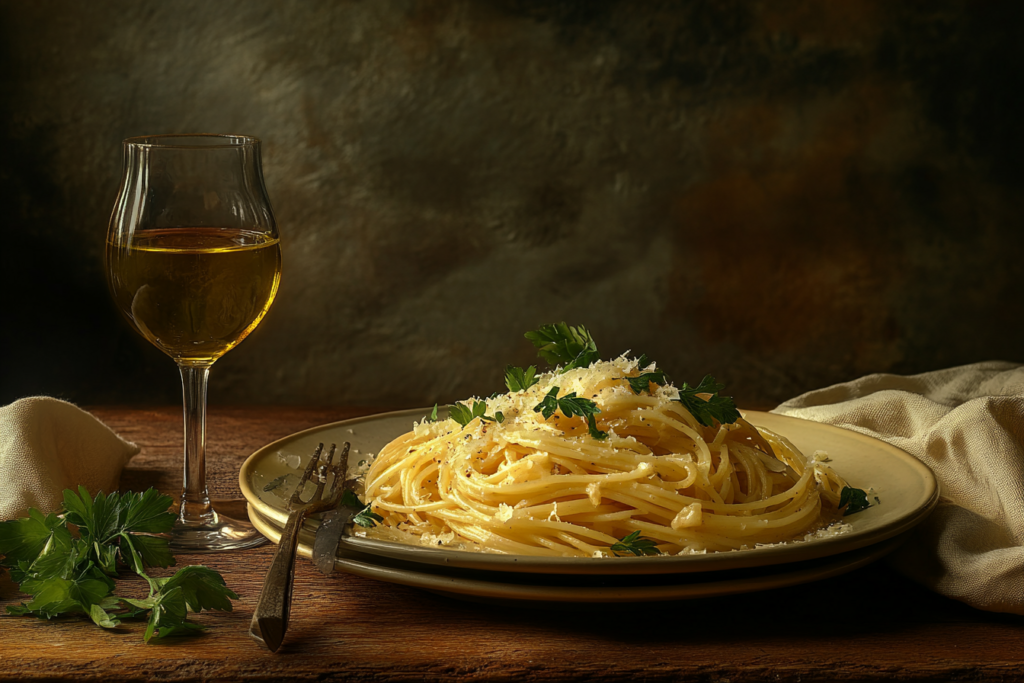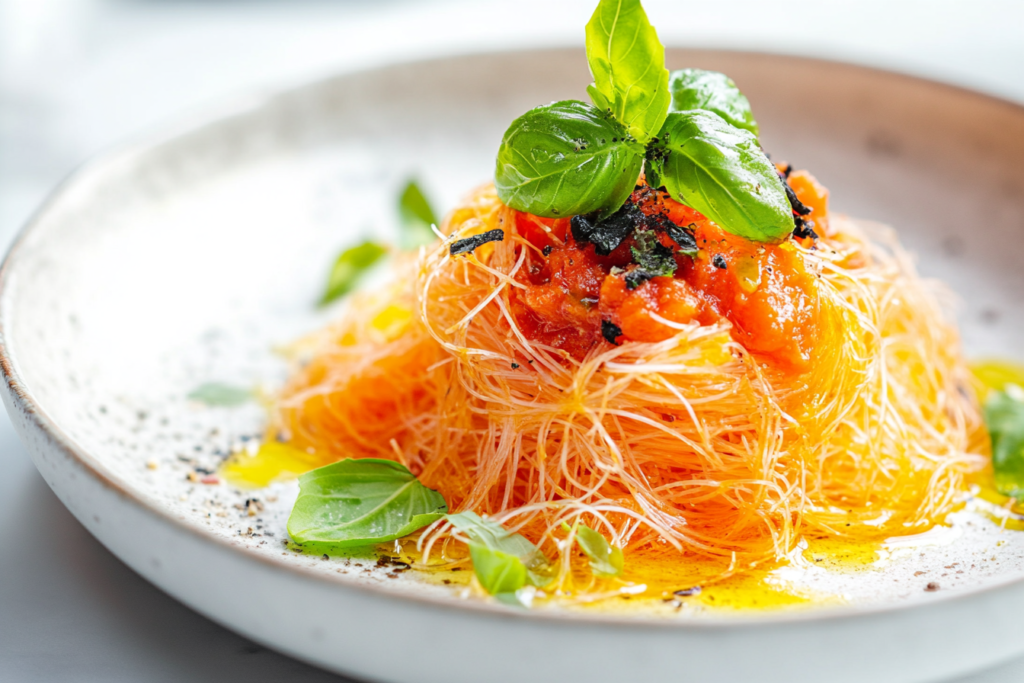If you’ve ever wandered down the pasta aisle and stumbled upon a pack of thin, delicate strands labeled “Capellini,” you might have wondered, “What’s the big deal with this pasta?” Well, let me tell you, Capellini—often called angel hair pasta—is more than just a skinnier version of spaghetti. It’s a culinary gem in its own right, offering versatility, elegance, and the ability to elevate even the simplest of dishes into something extraordinary.
Capellini pasta is a staple in Italian cuisine and loved worldwide for its unique ability to soak up sauces and deliver flavors with every bite. But what sets it apart? And why should you consider making it a regular in your kitchen? Buckle up, because we’re diving headfirst into everything you need to know about Capellini pasta, starting from its origins to how you can create mouthwatering dishes with it.
Table of contents
- How Is Capellini Pasta Made?
- Types of Capellini Pasta Dishes
- Nutritional Profile of Capellini Pasta
- How to Cook Capellini Pasta Perfectly
- Best Sauces and Pairings for Capellini Pasta
- Capellini Pasta in Italian Culture
- Conclusion: Why Capellini Pasta Deserves a Place in Your Kitchen
- FAQs About Capellini Pasta
How Is Capellini Pasta Made?
Traditional Ingredients

When it comes to making Capellini, simplicity is key. Traditional recipes call for just a few ingredients: semolina flour, water, and sometimes eggs. The beauty of Italian pasta lies in its ability to turn these humble ingredients into something truly spectacular.
Semolina flour, derived from durum wheat, gives Capellini its characteristic firmness and slight nutty flavor. This type of flour is high in protein, which helps the pasta maintain its shape even when cooked. Eggs, if added, contribute richness and a velvety texture to the dough.
Step-by-Step Production Process
The production process of Capellini has evolved over time. While artisanal pasta makers still rely on traditional hand-rolling techniques, most Capellini today is made using industrial machinery. Here’s a simplified breakdown of the process:
- Mixing the Dough: Semolina flour and water are combined until the mixture reaches a crumbly consistency. If eggs are used, they’re added at this stage for extra richness.
- Kneading: The dough is kneaded until it becomes smooth and elastic. This step is crucial for developing gluten, which gives the pasta its structure.
- Rolling and Shaping: The dough is rolled out into thin sheets and then cut into fine strands, either by hand or using a machine. The strands are carefully separated to prevent clumping.
- Drying: To extend its shelf life, the pasta is air-dried for several hours or even days, depending on the humidity and temperature. This step ensures that the Capellini retains its delicate texture when cooked.

Types of Capellini Pasta Dishes
Classic Recipes Featuring Capellini
If there’s one thing Capellini pasta does well, it’s versatility. From simple weeknight dinners to elegant dinner parties, there’s no shortage of ways to incorporate this delicate pasta into your meals. Here are a couple of classic recipes to get you started:
Capellini with Garlic and Olive Oil

This dish is a shining example of how simplicity can be utterly delicious. All you need is garlic, olive oil, and a sprinkle of Parmesan cheese. The pasta’s thin strands soak up the garlicky goodness, creating a dish that’s light yet satisfying.
Capellini with Fresh Tomato Sauce

For a taste of summer on your plate, pair Capellini with a fresh tomato sauce made from ripe, juicy tomatoes, basil, and a drizzle of olive oil. Add a pinch of red pepper flakes for a subtle kick, and you’ve got a dish that’s bursting with flavor.
Here’s a quick table for Capellini with Garlic and Olive Oil to guide you:
| Ingredient | Quantity |
|---|---|
| Capellini Pasta | 200g |
| Olive Oil | 2 tbsp |
| Garlic (minced) | 3 cloves |
| Parmesan Cheese (grated) | 2 tbsp |
| Salt | To taste |
| Black Pepper | To taste |
Modern Variations and Fusion Cuisine
Capellini isn’t just limited to traditional recipes. Chefs around the world are getting creative, incorporating it into fusion dishes. Think Capellini stir-fried with soy sauce and veggies for an Asian twist, or topped with creamy avocado and lime for a fresh, modern vibe. The possibilities are endless!
Nutritional Profile of Capellini Pasta
Caloric Breakdown
Now that we know how Capellini pasta is made and some delicious dishes to create with it, let’s dive into its nutritional profile. Capellini is an excellent option for those looking for a quick, satisfying meal without too many calories. On average, a 100-gram serving of cooked Capellini pasta provides approximately:
- Calories: 158 kcal
- Carbohydrates: 31 grams
- Protein: 6 grams
- Fat: 1 gram
- Fiber: 1.5 grams
Its high carbohydrate content makes it a fantastic energy source, especially for those with active lifestyles. The minimal fat content also means it’s a light choice, making it suitable for low-fat diets. However, portion control is key, as overindulging can add up quickly in terms of calories.
Health Benefits and Considerations
Capellini pasta, like other types of pasta, is often misunderstood in terms of its health benefits. While some may shy away from carbs, they are an essential part of a balanced diet, and when paired with nutritious ingredients, Capellini can be a wholesome meal option. Here’s why:
- Provides Sustained Energy: The complex carbohydrates in Capellini release energy slowly, keeping you energized throughout the day.
- Low in Fat: As mentioned earlier, it’s a naturally low-fat food, making it a guilt-free choice for those watching their fat intake.
- Customizable for Dietary Needs: Whether you’re vegan, vegetarian, or following a specific diet, Capellini is a blank canvas that can adapt to your preferences.
However, it’s worth noting that store-bought Capellini is often made from refined flour, which lacks some of the fiber found in whole-grain pasta. If fiber is a concern, look for whole-grain or enriched varieties to get the most out of your meal.
How to Cook Capellini Pasta Perfectly
Tips for Boiling Capellini Pasta
Cooking Capellini pasta might sound straightforward, but its delicate nature requires a little extra care to ensure it doesn’t turn into a mushy mess. Here are some foolproof tips:
- Use Plenty of Water: Capellini needs room to move around while cooking. Use a large pot with at least 4 liters of water for every 100 grams of pasta.
- Salt Generously: Add about 1-2 tablespoons of salt to the boiling water. This is your one chance to season the pasta itself, so don’t skip it!
- Watch the Clock: Capellini cooks fast—usually in 2-3 minutes. Set a timer and taste it frequently to ensure it’s al dente, which means firm to the bite.
Avoiding Common Cooking Mistakes
Even seasoned cooks can occasionally misstep when preparing Capellini pasta. Here are some common pitfalls to avoid:
- Overcooking: Capellini’s fine strands can easily overcook, resulting in a soggy texture. Remove it from the water as soon as it reaches al dente and drain immediately.
- Skipping the Stir: Stirring occasionally while the pasta cooks prevents the strands from clumping together.
- Rinsing with Water: After draining, resist the urge to rinse the pasta with water. Rinsing removes the starch that helps sauces cling to the strands.
Best Sauces and Pairings for Capellini Pasta
Light Sauces and Their Pairing Benefits
Capellini’s delicate structure makes it the perfect match for light, flavorful sauces. Think olive oil, fresh herbs, garlic, and lemon. These types of sauces complement the pasta without overwhelming its texture. A drizzle of extra virgin olive oil with minced garlic and a sprinkle of parsley can transform a simple dish into a restaurant-worthy meal.
Incorporating Vegetables and Proteins
One of the best things about Capellini is its versatility. You can easily turn it into a balanced meal by adding:
- Vegetables: Sautéed zucchini, cherry tomatoes, spinach, or roasted bell peppers.
- Proteins: Grilled chicken, shrimp, or tofu. For a vegetarian twist, add a handful of chickpeas or a poached egg.
By mixing in these ingredients, you’re not just adding flavor but also boosting the nutritional value of your dish.
Capellini Pasta in Italian Culture
Regional Variations
Capellini might be loved worldwide, but its roots remain deeply intertwined with Italian culture. Depending on the region, Capellini is paired with different sauces and ingredients:
- Northern Italy: Here, Capellini is often served with creamy sauces and cheeses, reflecting the region’s preference for dairy-rich dishes.
- Southern Italy: In contrast, the south favors lighter, tomato-based sauces, often enhanced with garlic, olive oil, and fresh basil.
Festivals and Events Featuring Capellini
Capellini isn’t just a dish; it’s a celebration in itself! Across Italy, food festivals often showcase this beloved pasta. In small towns and villages, locals gather to prepare traditional Capellini recipes, sharing them with friends, family, and visitors. These events serve as a reminder of the cultural significance of pasta in Italian life.
Related Recipe articles you might like
Looking to enhance your cooking repertoire with versatile and timeless recipes? Consider incorporating dishes that leverage the simplicity and functionality of a Dutch oven. Whether you’re exploring the Ultimate Guide to Dutch Oven Recipes or creating a hearty, slow-cooked meal like a Smoked Chuck Roast, this cooking tool is invaluable for both novice and experienced chefs. For those who prefer poultry, a Slow Cooker Turkey Wings Recipe adapted to a Dutch oven method can be equally delightful.
For a creative side dish, try our Passover Potato Pie Recipe, which offers a unique, comforting twist that pairs beautifully with lighter pasta dishes like Capellini.
These options not only expand your culinary adventures but also perfectly complement lighter pasta dishes like Capellini, creating a balanced meal experience.
Conclusion: Why Capellini Pasta Deserves a Place in Your Kitchen
Capellini pasta might be delicate in appearance, but it’s a powerhouse when it comes to versatility and flavor. Its quick cooking time, adaptability, and ability to pair seamlessly with a wide range of ingredients make it a must-have for any home cook. Whether you’re whipping up a quick dinner, preparing a festive meal, or experimenting with new recipes, Capellini pasta is your reliable partner in the kitchen.
From its rich Italian heritage to its modern-day versatility, Capellini proves that good things often come in small packages. So the next time you’re at the grocery store, don’t hesitate to grab a pack. Trust me—you’ll thank yourself when you’re savoring a steaming bowl of perfectly cooked Capellini topped with your favorite sauce.
FAQs About Capellini Pasta
Is Capellini the Same as Angel Hair Pasta?
Yes, Capellini is commonly referred to as angel hair pasta. Both names describe the same type of pasta with ultra-thin strands, typically about 0.85 to 0.92 mm in diameter. While “Capellini” is the Italian name, “angel hair” is the English term used more frequently in the U.S.
What Is Capellini Pasta Good For?
Capellini pasta is ideal for dishes that require a delicate texture. Its fine strands pair beautifully with light sauces like olive oil, garlic, or fresh tomato. It’s also great in soups, as it cooks quickly and absorbs flavors well, making it perfect for broths and light, fresh meals.
What Is the English Version of Capellini Pasta?
The English equivalent of Capellini pasta is “angel hair pasta.” While the name differs, both terms refer to the same product—thin, delicate pasta strands perfect for light and simple dishes.
Can You Use Capellini for Spaghetti?
Yes, you can use Capellini as a substitute for spaghetti in many dishes, but keep in mind its finer texture. Capellini works best with lighter sauces, as it may not hold up well under the weight of heavy, chunky toppings traditionally used with spaghetti.

